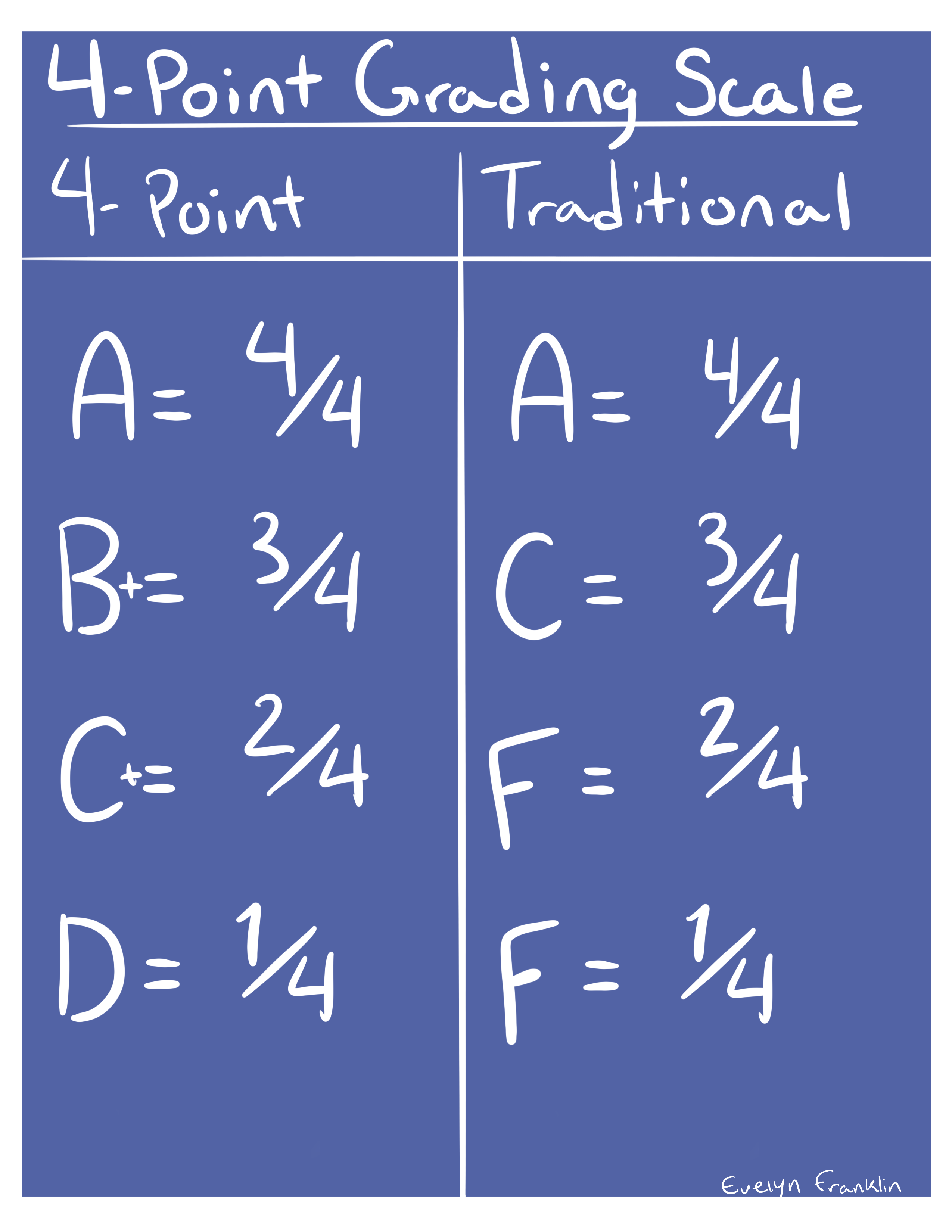As a student at San Marcos, you have probably noticed that some of your classes use a different grading system, called the 4-point grading scale, rather than the one you are used to. The way that the 4-point grading system works is by implementing a way to measure “proficiency” in a subject and make it easier for students to know if they are meeting the standards of the unit. A student doing the same work with the traditional grading system will receive a lower grade than they would get with the 4-point grading scale. This new scale gives students the opportunity to see where they need to focus their energy to get a higher grade in the class. It helps struggling students to receive a passing grade while also pushing students who are doing well in a class to achieve more.
“The 4-point grading scale allows me to set a high standard of “proficiency” in my class while still giving students the chance to earn high letter grades.” Said physics teacher Ms. Carver. She went on to explain the scale in the following way; “How it works is I grade out of 4, and then in NEO I use a grading scale that is adjusted so a 4/4 would be an A, a 3/4 would be a B+, a 2/4 would be C+, and a 1/4 would be a D. On a traditional grading scale, 4/4 would be an A, 3/4 would be a C, and 2/4 and 1/4 would be an F.”
Some teachers and students might be opposed to changing from the traditional grading system because the new system gives students an excuse to view it as easy and put in less effort. The traditional scale allows students to take on a greater challenge and test their abilities to a larger extent than the 4-point grading scale would. This is because compared to the new system, the traditional scale sets a higher standard of proficiency and therefore makes a student work harder for a “proficient” grade.
Although this scale might not be useful in all classes, I think that various existing courses could greatly benefit from switching to it. For example, I would argue that it would fit well in art courses. Every artist has a different style of creating, but the assignments are often based on how well someone can utilize the elements of art and the principles of design within the pieces they create. Because of this, you could use the 4-point grading scale to measure how proficient an artist is with using those tools in their finished products.
In conclusion, the 4-point grading scale can and should be utilized more within different classes. Although there are benefits of keeping the traditional grading scale, the opportunities that this new scale presents can offer students better understanding of where they are struggling in a class, and then help them work towards creating progress in those places. It can also be useful for students taking non academic classes to still allow them to create in their own style of work while being graded on their proficiency within the specific teachings.




























